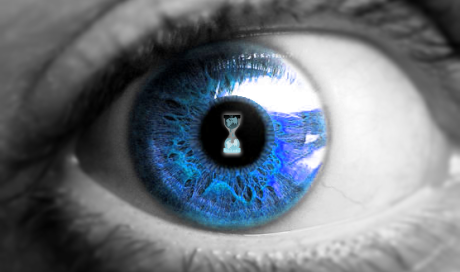Wikileaks: A brief history, pre-2010

This week-long serialisation forms the vast part of my undergraduate dissertation: "An empirical analysis of Wikileaks, pre- and post- the 2010 diplomatic cables release". Media organisation or terrorist group; revolutionaries or journalistic evolutionists? This post will roll back to pre-2010 and before the cables release, to discover the roots of the whistleblowing organisation.
- See the previous posts on the media reaction to 'Cablegate'.
The conception of Wikileaks is shrouded mostly in secrecy. The whistleblowing organisation appears to have been smelted from the fictional depths of a James Bond movie.

The site was reported to be set up by Chinese dissidents, in protest of the sentencing of Shi Tao, a journalist sentenced to 10 years in prison, for releasing an email about the events in Tiananmen Square in 1989.
Julian Assange, who appeared seemingly from nowhere and propelled into the media spotlight as the primary spokesperson and founder of the whistleblowing website, appeared at first only to be 'an official' and 'member of the advisory board'.
Other founders of the Wikileaks movement were mathematicians, cryptographers, as well as a former U.S. intelligence analyst, and start-up technologists ranging from the United States, Australia, Europe, and South Africa -- though members remain anonymous.
The site was at first designed to provide "information, transparency and debate" in "oppressive regimes in Asia, the former Soviet bloc, sub-Saharan Africa and the Middle East". However, the Wikileaks organisation was fully aware that the list was not endless and invited those from all other regions of the world to contribute to expose "unethical behaviour in their governments and corporations".
In February 2008, a U.S. federal judge ordered the Wikileaks domain ("www.wikileaks.org") to be shut down by their domain registrar, Dynadot. This all resulted from a disgruntled ex-employee of the Julius Baer Trust and Bank submitting documents to the site purportedly showing "offshore tax evasion and money laundering" by clients of the bank.
This was the first legal challenge that Wikileaks had to navigate, with their domain name and 'corporate' web identity was disallowed by the court.
Wikileaks ultimately triumphed through the lack of technological knowledge owned by the court, with similar domain names from various top-level geographical domains (such as .de, .be, .cx etc.) connecting to the site instead. The IP address of the web server was not shut down, allowing readers to manually access the site using the widely publicised link.
Yet within a month of this ruling, the same judge reversed the injunction citing ‘First Amendment [of the U.S. constitution] issues' which would restrict constitutionally bound freedom of speechand the presses (though arguably Wikileaks acting as journalists is subjective by individual U.S. state law).
The judge's decision allowed for Wikileaks to reclaim their domain name and as the injunction was dropped, restrictions on preventing further releases relating to the bank and trust were fell, leaving Wikileaks to release new documents pertaining to the bank's 'morals and ethics'.
Late 2008 through to 2009 was a difficult year in that sometimes it was even more controversial for Wikileaks. Focusing on mostly public sector organisations, there were political leaks in the United States, the release of the Internet censorship lists of Australia, Denmark and Thailand and the 'Climategate' emails leak.
This was highly reported in the press, amidst the smaller leaks throughout the year.
However, infrastructure issues caused the Wikileaks site to suffer with numerous distributed denial-of-service attacks, forcing the server's offline. An unrelated server fire in an uninterruptable power supply at Wikileaks' Swedish datacenter caused further issues.
Wikileaks also suffered a 'personal' controversy by publishing nearly 4,000 websites censored under Danish law by Internet service providers for being linked to child abuse imagery.
Resulting in the leak being published, Wikileaks told news outlet Wikinews -- two unrelated organisations -- that the release was justified as 'a fair representation of the material we obtained'.
In 2009, Wikileaks published and disclosed its own secret donor list -- a list of people who support financially the operations of the organisation.
An email was sent by a senior Wikileaks staff member to donors without blind carbon-copying email addresses, leaving one recipient to submit it to the site, proving Wikileaks does not censor nor breach impartiality when dealing with leaks from whistleblowers.
By the end of 2009 and after a series of game-changing leaks were released, Wikileaks had been banned from three countries. Seemingly having a change of tune, describing the sites reasons for operating is "solely in the name of historical record".
With this, Assange had also claimed he was part of an 'activist organisation' in the Wired interview, straying away from the 'media organisation' it had intended to be perceived as.
Continue reading
The next post will examine how Wikileaks not only operates but crucially how it functions amid the vast press preoccupation with its values of secrecy. Read more.
In this series:
- Part 1: Wikileaks: The diplomatic cables release and media reactions
- Part 3: Wikileaks: How the organization functions and operates
- Part 4: Wikileaks: How 'Anonymous' subverted the most powerful governments
- Part 5: Wikileaks: How the diplomatic cables were leaked
- Part 6: Wikileaks: How the diplomatic cables sparked the 2011 Arab Revolutions
Previous content:
- Wikileaks Assange: 'Facebook open to US intelligence'
- US subpoenas Wikileaks tweets, and why this could affect you
- Why Wikileaks cannot be a 'terrorist organisation'
- State Dept: Discuss Wikileaks, risk your career prospects
- CBS News: Assange: No one harmed by site's leaks
- CBS News: Open hacking season - on everyone!
- Full ZDNet coverage on Wikileaks